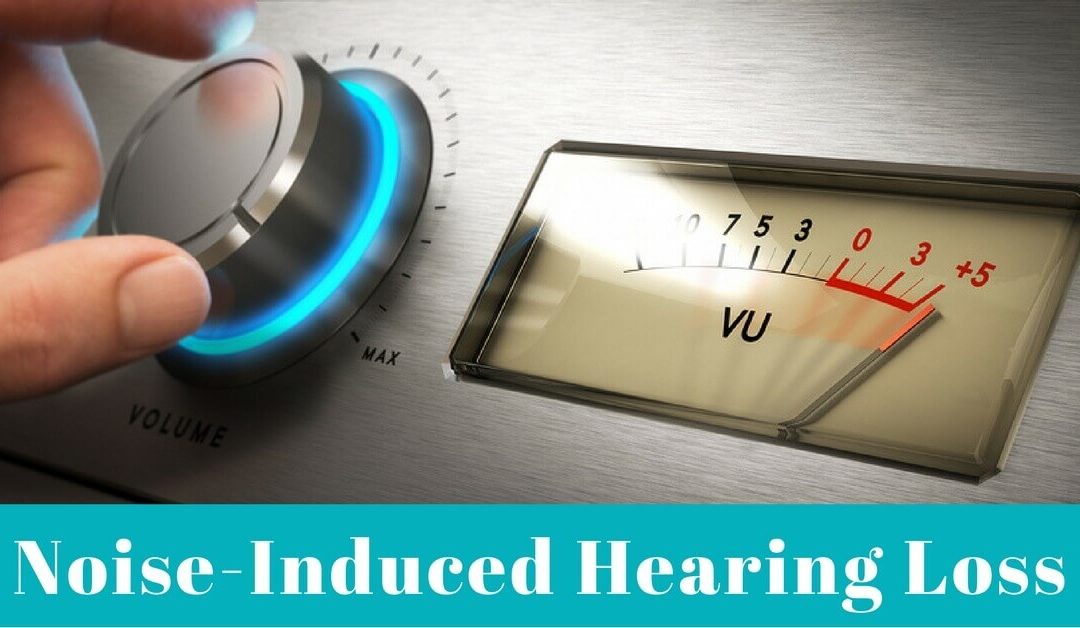What is Noise-Induced Hearing Loss?
Noise-induced hearing loss is one of the most common forms of hearing loss, along with presbycusis (age-related hearing loss). It occurs when we are exposed to dangerous levels of noise, whether gradually over the long term (occupational noise, listening to music at a loud volume, etc.) or in a one-time event (gunshot, explosion, etc.).
Noise-induced hearing loss is a form of sensorineural hearing loss, which occurs due to irreparable damage of inner ear hair cells. In addition to exposure to loud noise, sensorineural hearing loss may be caused by certain classes of medications, and the natural process of aging.
As with most forms of hearing loss, noise-induced hearing loss is permanent. With exposure to dangerous levels of noise, we may experience short-term changes in our hearing or a ringing in the ear (tinnitus). Over an extended period of time, repeated exposure to loud noises, without the use of hearing protection, may lead to permanent hearing loss.
Understanding Decibels
A decibel is a unit used to measure the level of sound. A normal conversation clocks in at 60 decibels, while a live rock concert is double the noise level, at an average of 120 decibels. Louder sounds we may experience are gunshots (140 to 190 decibels), power tools (110 to 130 decibels), and volumes at live sporting events at a stadium (120 to 140 decibels).
Hearing specialists believe that long or extended exposure to sounds over 85 decibels could lead to permanent hearing loss. Furthermore, your hearing is at greater risk as the decibel levels or exposure time rise.
To better understand decibels, let’s take a quick look at how we hear: First, sound waves are picked up and enter the outer ear, then travel to the middle ear. These sound waves are amplified by the ear drum and vibrations are sent to the small bones of the middle ear. These vibrations are then transmitted to the inner ear, where they are picked up by the inner ear hair cells. Hair cells translate sound vibrations into neural signals, which are then sent to the brain to be registered as sounds we recognize.
Exposure to dangerous levels of sound could permanently damage inner ear hair cells, which leads to noise-induced hearing loss.
Paying Attention to Noise Levels
Because hearing is an invisible sense, most of us don’t pay attention to the levels of sounds we experience until it becomes “painful.” Most of us have had the experience where extremely loud noises or sudden bursts of loud sounds are shocking and uncomfortable. However, it is important to pay attention to noise levels that we experience on a regular basis – ones that do not necessarily cause discomfort – to ensure that we do not inadvertently expose ourselves to dangerous decibel levels.
When consuming media – TV, radio, music – make sure that you listen at 60% volume for no more than 60 minutes at a time. This is the 60-60 rule, as recommended by hearing specialists. Many of us now consume media using our smartphones or tablets, plugged into portable earbuds. In fact, earbuds are quite harmful for our hearing. With their placement in our ear canals, close to the eardrums, earbuds create noise conditions that are comparable to using power tools in a coal mine. Because they are ineffective at blocking out external sound in noisy environments, people tend to turn up the volume when using earbuds.
For a hearing-healthy solution, invest in a pair of noise-canceling headphones. These eliminate extraneous external noises, which make it easier for you to hear your media at lower volumes.
Noise-Induced Hearing Loss in the Workplace
According to the Center for Disease Control’s National Institute for Occupational Safety and Health (NIOSH), occupational hearing loss is “one of the most common work-related illnesses in the United States. Approximately 22 million U.S. workers [are] exposed to hazardous noise levels at work.” Additionally, NIOSH “recommends workplace noise exposures not exceed an 8-hour time-weighted average of 85 decibels … Repeated exposure may gradually cause work-related hearing loss.”
The Occupational Safety and Health Administration (OSHA) notes that “noise-related hearing loss has been listed as one of the most prevalent occupational health concerns in the United States for more than 25 years.” The US Department of Labor has outlined requirements for hearing protection in the workplace, as well as engineering controls and administrative controls of sound in the workplace.
How can you tell if your workplace is too loud? One simple test: if you’re talking to a co-worker about arm’s length away and you cannot hear them speak, then your workplace is too loud. To be more precise, download an app that will measure noise levels. If your workplace clocks in above 85 decibels, then you are at risk for hearing loss.
Hearing specialists recommend utilizing customized ear protection in the workplace. Custom ear protection prevents the infiltration of damaging volumes of sound, while also molded to fit the ear and allow us to hear the things we need to hear to perform well at our jobs.
How to Protect Your Hearing
Unlike other forms of hearing loss, noise-induced hearing loss is preventable! It’s important to take the steps now to protect your hearing from dangerous levels of noise. Invest in a pair of custom molded earplugs. These are made of a mold of your ears and are designed to fit snugly. A cheaper and easier option is foam or silicone earplugs, which are usually available at your local pharmacy. In addition to hearing protection, it’s important to make sure that volume levels are kept at safe hearing levels.
If you have experienced changes in your hearing and are concerned about noise-induced hearing loss, it is important to take a hearing test as soon as possible. Contact your local audiologist or hearing specialist for a comprehensive hearing test.

